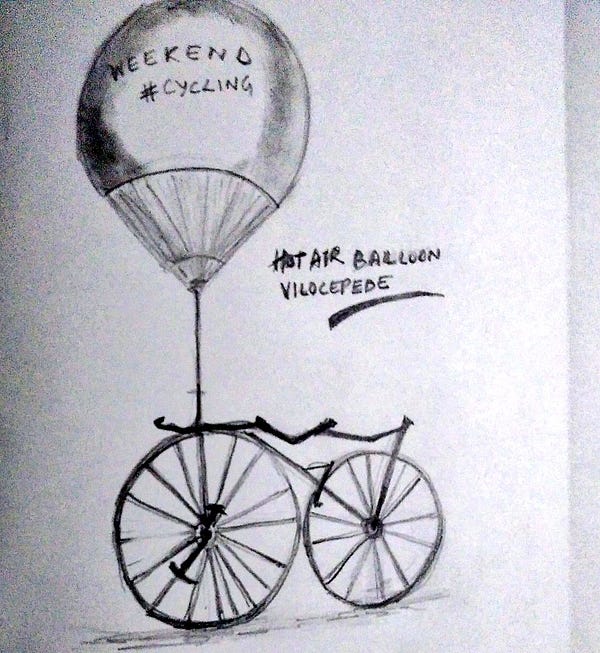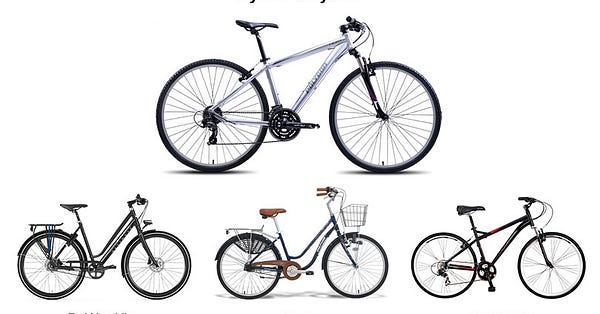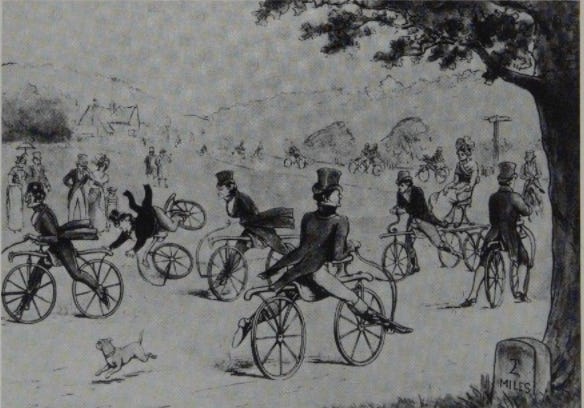A perfect pedal stroke
It has the power to lead the change
What is a perfect pedal stroke? Cyclists have different techniques of pedaling. In this issue of my newsletter, I explain it in the term of the week section and trace the history of cycling.
Bicycles have seen quite a development for accomplishing the goals of freedom and self-mastery for the man. On your bicycle, you could lead the change towards sustainable development goals.
Cycling, without any doubt, brings balance to one's life, and I have seen the results with my overall health. One can cycle whenever there is nothing else to do or work out, and cycling always works out.
Look at the benefits that cycling brings. I have explained it at length in one blog post, Why Cycling Is Good For You and Everyone.
Now, let us learn a new term this week.
Term of the week: Pedaling
What! Why a section on pedaling? Isn't it the simplest thing to do while on a bicycle?
It is pretty intuitive for anyone to pedal right after hopping on a bicycle. However, there is more to it.
One needs to understand the biomechanics of pedaling to be a better cyclist. Bicycles are healthy and economical options for traveling within and outside urban settlements.
Some cyclists propose that a circular motion effectively uses all four leg muscles and, hence, is better.
However, some researchers say that the upstroke (recovery phase) produces no power. It doesn't add anything to the overall pedaling power. All of the energy in the stroke comes from extensor (glute, quad, and calf) activity in the power phase (downstroke).
Honestly, I have tried both styles in pedaling. My mind adapts to some truth in both arguments around pedaling techniques.
Pedaling simple is best. I imagine scanning a circular shape while cycling uphills, pedaling with running shoes and without cleats.
Circular motion lets me stretch my ankles and relax. I gain speed on a flat surface when I focus more on the downstroke. Additionally, I never get in the way of the pedals during the upstroke.
In my opinion, one should pedal with the style that best suits one's morphology, terrain, bike fit, surrounding environment, and happiness levels.
Anyways, you will be amazed to learn that the early bicycles did not even have pedals, cranks, or chainstays.
History of Cycling
Early bicycles were called "Swiftwalker." This term was given by the German Inventor Karl von Drais. Swiftwalker hit the roads in 1817 in New York and was banned by the local laws.
As the name suggests, a rider could walk on top of the bike with one's feet leaving the ground during descents.
Bicycles had other names too. Some of these names are hobby-horse, velocipede, and boneshaker. The velocipedes of the mid-1800s consisted of two wooden tires, a front fork, handlebars for steering, a saddle on a wooden frame, and pedals on the front wheel's axle.


Bicycles were common to weigh around 80 pounds ( 36.28 kg). It was only in 1888 lighter frame materials and pneumatic tires replaced heavier iron frames and wooden tires.
Most post-war competition bikes in Britain were made from Reynold's venerable and magnificent 531c tubing. 531 was sophisticated steel tubing and was more robust, lighter, and stiffer by alloying it with a combination of manganese and molybdenum.
Dutch rider Joop Zoetemelk won the 1980 Tour de France from team Ti-Raleigh using a heat-treated version of 531, Reynolds 753.
Until the mid 20th century, there were only road bikes, cyclocross bikes, and time trial bikes, and there were no mountain bikes, aero, or gravel bikes.
I found a detailed post on the types of bicycling.


There is much more on cycling history, and I will explore and bring it in some of my subsequent posts.
Stay tuned for more next week.


